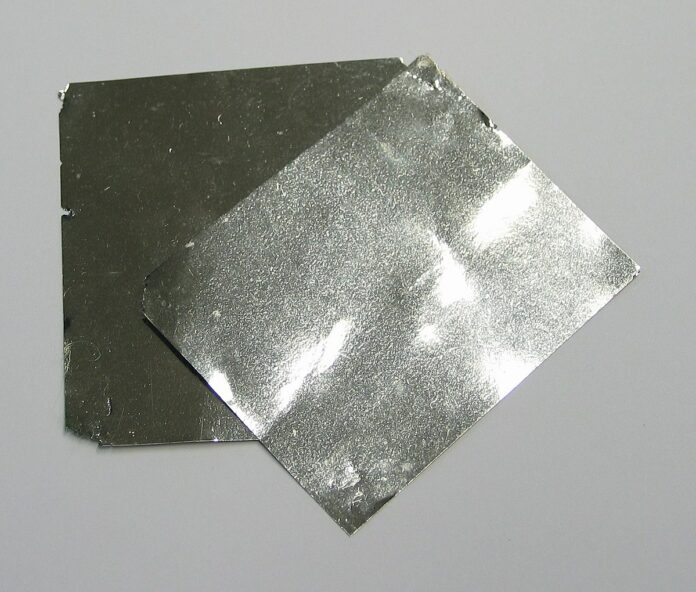At first glance, there seems to be no connection between the experiments of renowned English chemist Smithson Tennant and the extinction of prehistoric giant reptiles. However, a fine thread links these events despite the millions of years separating them: iridium. On Earth, it is extremely rare, with only one atom of this unique metal for every billion others.
Iridium is found in high concentrations in space objects and meteorites, like the one believed to have caused the extinction of the dinosaurs. This is why scientists were unaware of the element’s existence until 1803, when Tennant discovered iridium and osmium (another rare and expensive metal) while working with natural platinum.
Characteristics of Iridium
Iridium (Ir) is a silver-white chemical element with atomic number 77 on the periodic table. It belongs to the “noble” platinum group, making it highly resistant to corrosion and oxidation, which gives it an almost eternal lifespan. Iridium’s melting point exceeds 2400°C, and it boils at 4701°C, which is exceptional even among metals.
It has a high density of 22.65 g/cm³ (a drop of iridium the size of a match head weighs 1g). The metal is so tough that it cannot be manipulated by mechanical means and only becomes pliable when heated to white-hot temperatures. Iridium’s physical properties make its alloys incredibly wear-resistant.
In nature, iridium consists of two stable isotopes—191 and 193. Artificially, radioactive iridium isotopes with mass numbers ranging from 164 to 199 have been created. Iridium is chemically inert, reacting only with chlorine, halogens, and sodium peroxide. Although not inherently toxic, certain iridium compounds, such as hexafluoride, are hazardous.
The Heaviest Metal
Scientists still debate whether iridium or osmium deserves the title of “heaviest metal.” Their densities are nearly identical, 22.65 and 22.61 g/cm³, and extracting the metal is labor-intensive, so the difference of 0.04g might be a margin of error in calculations.
A 1 cm³ cube of iridium weighs 22.65g, while the same size cube of lithium, the lightest metal, weighs just 0.906g. In its liquid form, iridium is slightly lighter at 19.39 g/cm³.
Where Cosmic Metal Is Mined
It is believed that due to its high density, iridium sank deeper into the Earth near its core during the planet’s formation. Thus, extracting iridium is laborious and costly. In its natural state, iridium is never found in isolation, often surrounded by platinum, osmium, palladium, or other noble metals.
Scattered forms of iridium are found in copper ores, aurusmiride, and rarely in gold deposits. The primary supplier is South Africa, with additional deposits in Russia, Canada, the U.S., Papua New Guinea, Tasmania, and Borneo. Only about 3-4 tons of iridium are extracted yearly—enough to fill just a 300-liter barrel. For comparison, platinum production averages 200 tons annually.
Extracting iridium from ore involves a series of chemical reactions. The final product is obtained in powder form, which is then compressed and melted. Because of the complex extraction process, iridium is primarily produced as a by-product from mining other precious metals like gold, nickel, and copper.
Where Iridium Is Used
Iridium’s noble properties have led to a growing range of applications in recent decades. It is used in spark plugs, jet engines, light bulbs, heat-resistant cookware, refractory glass, surgical instruments, and more. Iridium crucibles are crucial in growing monocrystals for lasers, thanks to their chemical inertness and high melting point.
This precious metal is also used in advanced cancer treatments due to its radioactive isotopes. Physicists envision using iridium as a powerful energy source in the future.
Price in 2024
As of 2024, iridium remains one of the rarest and most expensive metals, with its price fluctuating between $140 and $240 per gram on the global market. However, like in previous years, iridium cannot be traded on stock exchanges or through financial funds. It is sold primarily by manufacturers or a small group of sellers in ingot form. Many countries continue to enforce criminal penalties for the illegal sale, purchase, storage, or trade of iridium.
Interesting Facts
- The name “iridium” comes from the Greek word for “rainbow” due to the bright colors of its salts, ranging from yellow to dark blue or nearly black.
- Iridium holds atomic number 77, a symbolically significant number associated with cosmic mystery, divine favor, and perfection.
- Iridium can oxidize to +9 at very low temperatures.
- This noble metal is non-magnetic.
- Iridium and its competitor, osmium, are almost interchangeable in all applications.
- High concentrations of iridium in prehistoric fossils support the theory that this dense metal resides near Earth’s core.
- Since 2013, Rwanda’s National Bank has minted iridium coins with a face value of 10 francs, marking the first time the 999-purity metal has been used as currency.
- Iridium is used to create rings, earrings, brooches, and other jewelry by alloying with platinum at
